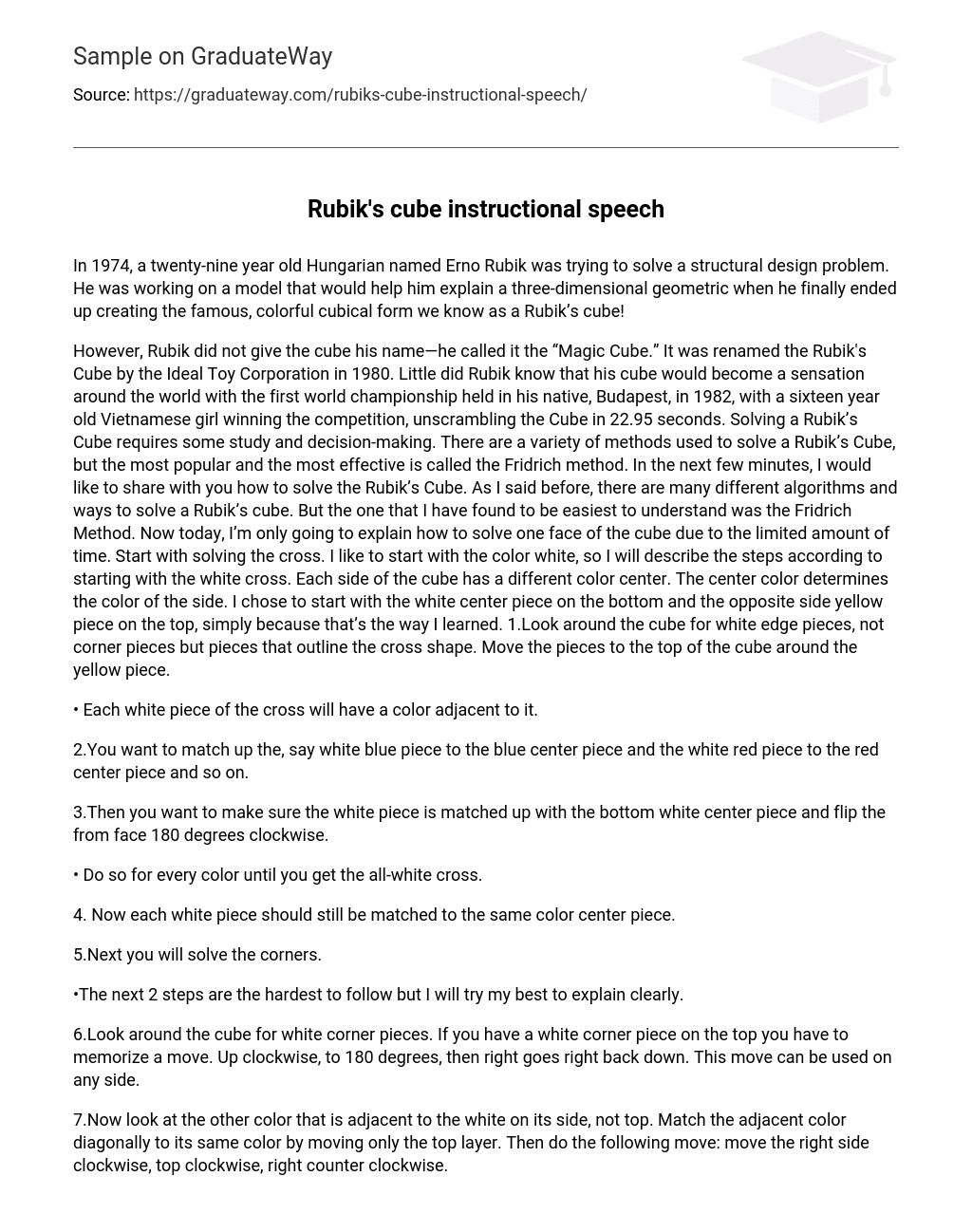In 1974, Erno Rubik, a 29-year-old Hungarian, unintentionally created the famous Rubik’s cube when he was trying to solve a design issue connected to three-dimensional geometry.
The cube originally had the name “Magic Cube” given by Rubik, but later on, it was renamed as Rubik’s Cube by the Ideal Toy Corporation in 1980. Little did Rubik know that his creation would become a global sensation. The first world championship took place in Budapest in 1982, where a sixteen-year-old Vietnamese girl solved the Cube in just 22.95 seconds. Solving a Rubik’s Cube requires careful analysis and decision-making. Among the various methods used, the Fridrich method is widely popular and effective. In the upcoming minutes, I will explain how to solve Rubik’s Cube using this method specifically. While there are multiple algorithms and strategies available, I find that comprehending the Fridrich Method is the easiest way to approach it. Today, due to time constraints, I will solely focus on solving one face of the cube. Let us start by solving the cross with white as our base color. Each side of the cube possesses a unique colored center that corresponds to its respective side color. To begin with, we align the white center piece at the bottom and position its opposite yellow piece at top since this is how I learned it initially.I recommend inspecting for white edge pieces around the cube that form an outline for our desired cross shape formation.Followed by rearranging surrounding pieces near yellow piece located at top of cube.
Adjacent to each color, there will be a white piece of the cross.
Align the white and blue piece with the blue center piece, and align the white and red piece with the red center piece, etc.
Next, align the white piece with the bottom white center piece and perform a 180-degree clockwise rotation on the front face.
Keep repeating the process for each color until you manage to create a pure white cross.
4. Pair the white piece with its corresponding color center piece.
Next, move on to resolving the corners.
I will make every effort to clarify the two most challenging steps.
When searching for white corner pieces on the cube, check all sides. If a white corner piece is found on the top side, execute the following moves: rotate the top side clockwise, then perform a 180-degree rotation, and finally rotate the right side downwards. This sequence can be used on any side of the cube.
7. To start, examine the color next to the white one on its side (not above it). Arrange this neighboring color diagonally with another color of the same shade using only the top layer. Then, follow these steps in order: rotate the right side clockwise, rotate the top layer clockwise, and rotate the right side counterclockwise.
Repeat the mentioned steps with the remaining white pieces until you achieve the desired outcome.
Make sure the bottom surface of the cube is entirely white and that each side’s lower layer has a consistent, solid color.
If you have ever given up on solving the Rubik’s cube, I recommend trying it again using the Fridrich method that I introduced. For more instructions, visit http://www.wikihow.com/Solve-a-Rubik’s-Cube-(Easy-Move-Notation). However, before proceeding, let me caution you that “Cubing” has become a global craze affecting people of all ages, and those who are obsessed with a Rubik’s Cube are often called “Cubaholics”. Many dedicated Cubaholics tend to experience ‘Rubik’s wrist’ and ‘Cubist’s thumb’! So, be careful!





